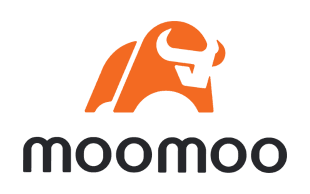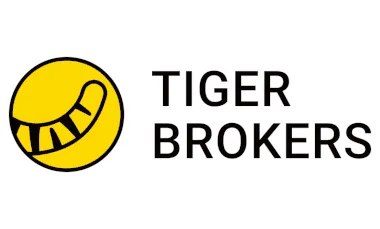Our top pick for
24/5 trading

Qualcomm Incorporated is a semiconductors business with stocks listed in the US. Qualcomm shares (QCOM) are listed on the NASDAQ and all prices are listed in US Dollars. Its last market close was US$150.4 – a decrease of 5.13% over the previous week. Here's how to invest if you're based in Australia.
Our top pick for
24/5 trading

Our top pick for
Copy trading

Our top pick for
Mobile app

Qualcomm's shares were split on a 2:1 basis on 15 August 2004. So if you had owned 1 share the day before the split, the next day you would own 2 shares. This wouldn't directly have changed the overall worth of your Qualcomm shares – just the quantity. However, indirectly, the new 50% lower share price could have impacted the market appetite for Qualcomm shares which in turn could have impacted Qualcomm's share price.
| 52-week range | US$132.3313 - US$228.2503 |
|---|---|
| 50-day moving average | US$164.8218 |
| 200-day moving average | US$176.5891 |
| Target price | US$204.7039 |
| PE ratio | 17.1197 |
| Dividend yield | US$3.3 (2.15%) |
| Earnings per share (TTM) | US$8.94 |
Use the fields above to explore the returns from a historical investment. Please refer to the charts further up this page to see performance over 5 years, or other periods. Past performance doesn't indicate future results. Capital is at risk.
Historical closes compared with the last close of $150.4
| 1 week (2024-12-13) | -5.13% |
|---|---|
| 1 month (2024-11-20) | -2.51% |
| 3 months (2024-09-20) | -10.96% |
| 6 months (2024-06-20) | -30.20% |
| 1 year (2023-12-20) | 7.09% |
|---|---|
| 2 years (2022-12-20) | 34.17% |
| 3 years (2021-12-20) | -14.87% |
| 5 years (2019-12-20) | 69.27% |
We currently don't have a partnership for that product, but we have other similar offers to choose from (how we picked these ):
The technical analysis gauge below displays real-time ratings for the timeframes you select. However, this is not a recommendation. It represents a technical analysis based on the most popular technical indicators: Moving Averages, Oscillators and Pivots. Finder might not concur and takes no responsibility.
Valuing Qualcomm stock is incredibly difficult, and any metric has to be viewed as part of a bigger picture of Qualcomm's overall performance. However, analysts commonly use some key metrics to help gauge the value of a stock.
Qualcomm's current share price divided by its per-share earnings (EPS) over a 12-month period gives a "trailing price/earnings ratio" of roughly 17x. In other words, Qualcomm shares trade at around 17x recent earnings.
That's relatively low compared to, say, the trailing 12-month P/E ratio for the NASDAQ 100 at the end of 2019 (27.29). The low P/E ratio could mean that investors are pessimistic about the outlook for the shares or simply that they're under-valued.
Qualcomm's "price/earnings-to-growth ratio" can be calculated by dividing its P/E ratio by its growth – to give 1.5598. A low ratio can be interpreted as meaning the shares offer better value, while a higher ratio can be interpreted as meaning the shares offer worse value.
The PEG ratio provides a broader view than just the P/E ratio, as it gives more insight into Qualcomm's future profitability. By accounting for growth, it could also help you if you're comparing the share prices of multiple high-growth companies.
Qualcomm's EBITDA (earnings before interest, taxes, depreciation and amortisation) is US$12 billion (£9.4 billion).
The EBITDA is a measure of a Qualcomm's overall financial performance and is widely used to measure stock profitability.
Over the last 12 months, Qualcomm's shares have ranged in value from as little as US$132.3313 up to US$228.2503. A popular way to gauge a stock's volatility is its "beta".
Beta measures a share's volatility in relation to the market. The market (NASDAQ average) beta is 1, while Qualcomm's is 1.286. This would suggest that Qualcomm's shares are more volatile than the average for this exchange and represent, relatively speaking, a higher risk (but potentially also market-beating returns).
| Revenue TTM | US$39 billion |
|---|---|
| Operating margin TTM | 26.25% |
| Gross profit TTM | US$25.6 billion |
| Return on assets TTM | 12.07% |
| Return on equity TTM | 42.25% |
| Profit margin | 26.03% |
| Book value | 23.606 |
| Market capitalisation | US$170 billion |
| EBITDA | US$12 billion |
TTM: trailing 12 months
Dividend payout ratio: 32.81% of net profits
Recently Qualcomm has paid out, on average, around 32.81% of net profits as dividends. That has enabled analysts to estimate a "forward annual dividend yield" of 2.15% of the current stock value. This means that over a year, based on recent payouts (which are sadly no guarantee of future payouts), Qualcomm shareholders could enjoy a 2.15% return on their shares, in the form of dividend payments. In Qualcomm's case, that would currently equate to about $3.3 per share.
While Qualcomm's payout ratio might seem fairly standard, it's worth remembering that Qualcomm may be investing much of the rest of its net profits in future growth.
Qualcomm's most recent dividend payout was on 18 December 2024. The latest dividend was paid out to all shareholders who bought their shares by 4 December 2024 (the "ex-dividend date").
Environmental, social and governance (known as ESG) criteria are a set of three factors used to measure the sustainability and social impact of companies like Qualcomm.
When it comes to ESG scores, lower is better, and lower scores are generally associated with lower risk for would-be investors.
Total ESG risk: 33.12
Socially conscious investors use ESG scores to screen how an investment aligns with their worldview, and Qualcomm's overall score of 33.12 (as at 12/31/2018) is nothing to write home about – landing it in it in the 49th percentile of companies rated in the same sector.
ESG scores are increasingly used to estimate the level of risk a company like Qualcomm is exposed to within the areas of "environmental" (carbon footprint, resource use etc.), "social" (health and safety, human rights etc.), and "governance" (anti-corruption, tax transparency etc.).
Environmental score: 16.85/100
Qualcomm's environmental score of 16.85 puts it squarely in the 8th percentile of companies rated in the same sector. This could suggest that Qualcomm is a leader in its sector terms of its environmental impact, and exposed to a lower level of risk.
Social score: 10.95/100
Qualcomm's social score of 10.95 puts it squarely in the 8th percentile of companies rated in the same sector. This could suggest that Qualcomm is a leader in its sector when it comes to taking good care of its workforce and the communities it impacts.
Governance score: 16.81/100
Qualcomm's governance score puts it squarely in the 8th percentile of companies rated in the same sector. That could suggest that Qualcomm is a leader in its sector when it comes to responsible management and strategy, and exposed to a lower level of risk.
Controversy score: 4/5
ESG scores also evaluate any incidences of controversy that a company has been involved in. Qualcomm scored a 4 out of 5 for controversy – the second-lowest score possible, reflecting that Qualcomm has a damaged public profile.
Qualcomm Incorporated was last rated for ESG on: 2019-01-01.
| Total ESG score | 33.12 |
|---|---|
| Total ESG percentile | 49.14 |
| Environmental score | 16.85 |
| Environmental score percentile | 8 |
| Social score | 10.95 |
| Social score percentile | 8 |
| Governance score | 16.81 |
| Governance score percentile | 8 |
| Level of controversy | 4 |
QUALCOMM Incorporated engages in the development and commercialization of foundational technologies for the wireless industry worldwide. It operates through three segments: Qualcomm CDMA Technologies (QCT); Qualcomm Technology Licensing (QTL); and Qualcomm Strategic Initiatives (QSI). The QCT segment develops and supplies integrated circuits and system software with advanced connectivity and high-performance, and low-power computing technologies for use in mobile devices; automotive systems for connectivity, digital cockpit, and ADAS/AD; and IoT, including consumer electronic devices, industrial devices, and edge networking products. The QTL segment grants licenses or provides rights to use portions of its intellectual property portfolio, which include various patent rights useful in the manufacture and sale of wireless products comprising products implementing CDMA2000, WCDMA, LTE and/or OFDMA-based 5G products. The QSI segment invests in early-stage companies in various industries, including 5G, artificial intelligence, automotive, consumer, enterprise, cloud, IoT, and extended reality, and investments, including non-marketable equity securities and, to a lesser extent, marketable equity securities, and convertible debt instruments. It also provides development, and other services and sells related products to the United States government agencies and their contractors. The company was incorporated in 1985 and is headquartered in San Diego, California.
We've compared the fees and features of 40 trading platforms to find the best picks for options traders in Australia.
Webull is a broker with zero-commission trading and a suite of tools to help you invest.
The best day trading platforms in Australia offer low fees and are packed full of features essential for algorithmic trading.
We used Finder's proprietary algorithm to find Australian-listed companies that have strong fundamentals and have a share price under $5.
Big gainers included NoviqTech, Octava Minerals and Singular Health Group.
Top gainers included SSR Mining Inc, Appen and Insignia Financial.
If you're thinking of trading stocks with Tiger Brokers, check out our review of this online broker's fees, safety and pros and cons first.
Find cheap stock brokerage in Australia when buying and selling shares on the ASX and other international exchanges.
A beginner's guide to options trading in Australia. Read the step-by-step process and compare brokers to start trading.
Follow these tips to find the best share trading platform for you.